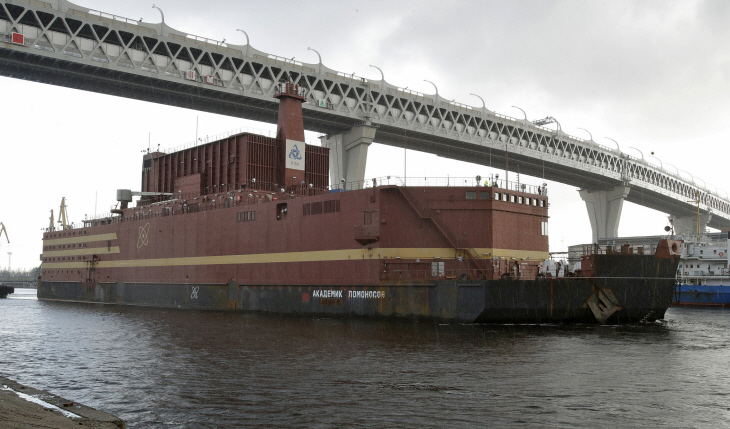
|
|
▲ Russian offshore floating nuclear power plant’Academic Lomosonov’. (Photo = AP) |
[에너지경제신문 유예닮 기자] China has announced a plan to build a floating nuclear power plant offshore. It is expected to become the world’s largest nuclear power plant when the planned offshore floating nuclear and ground nuclear power plants are completed.
In the nuclear power plant plan section of the ’14th Five-Year Plan (14·5 Plan) and Long-Term Target Enforcement by 2035′ recently released by the State Council of China I will promote it.”
‘Marine floating nuclear power platform’ refers to a method of loading and operating nuclear power plants on barges or ships.
China’s economic blueprint, the 14·5 plan, includes these details, which is an announcement of the Chinese government’s plan to start building and testing offshore nuclear power plants in earnest.
China’s maritime nuclear power plant research began in 2010, led by the China Nuclear Industry Group (CNNC). In recent years, the de facto development process was finalized and awaiting approval from the Chinese government.
Luoqi, director of the China Nuclear Power Research and Design Institute under the China Nuclear Industry Group (CNNC), told Chinese media in March 2019, “If the government permits smoothly, construction can start immediately.” It has been mentioned that the planned place is off the coast of Yantai City, Shandong Province.”
Shandong Province is China, the closest to Korea. From Incheon to Yantai, it is only 400km in a straight line.
Although the exact scale of the offshore nuclear power plant being promoted by China is not yet known, it is expected to be a small scale of one tenth of that of ordinary nuclear power plants built on the ground.
Since offshore floating nuclear power plants are mobile, they are mainly developed for supplying electricity to remote areas or offshore oil drilling facilities.
Russia is the first country in the world to develop and use an offshore floating nuclear power plant.
Since December 2019, Russia has deployed and operated the world’s first offshore nuclear power plant,’Academic Lomonosov,’ offshore in the Far East, and has been supplying power to remote areas.
There are voices of criticism about the floating nuclear power plant.
Greenpeace and other environmental groups around the world are opposing the floating nuclear power plant by calling it “floating Chernobyl” and “nuclear titanic”.
In addition to floating on the sea, China plans to actively expand nuclear power plants.
Chinese Prime Minister Li Keqiang (李克强) announced in a government work report held at the opening ceremony of the annual plenary of the National People’s Congress (Non-in University) on the 5th, “We will actively develop nuclear power plants on the premise of ensuring safety.”
Regarding the Prime Minister’s remarks, Chinese media predicted that it was the first time that the country’s highest-ranking leader used the modifier’active’ and that China’s nuclear power plant construction could gain momentum.
In the’draft’, the Chinese government proposed a specific goal to increase the capacity of nuclear power plants from the current 51 gigawatts (GW) to 70 GW by 2025, centering on its southeastern coastal regions.
China is already one of the world’s largest nuclear power plants.
Currently, China is operating 49 nuclear reactors. This is the third largest after the United States (94 units) and France (56 units).
However, while China is currently planning to build 55 reactors, the US and France are limited to the 5th and 1st phases respectively. According to the announced plan, China is expected to become the world’s number one country in terms of nuclear power plant operation within a few years.
